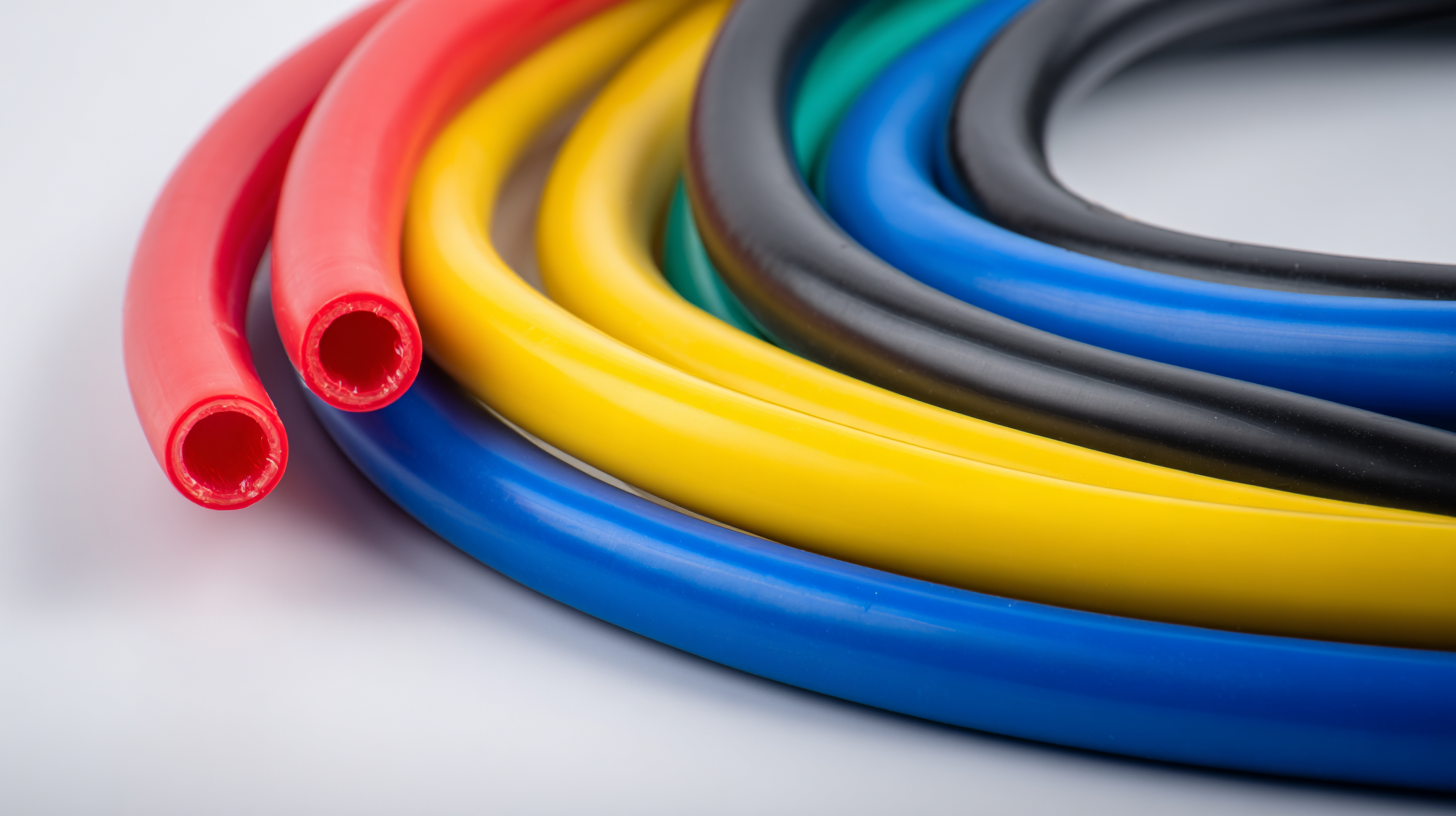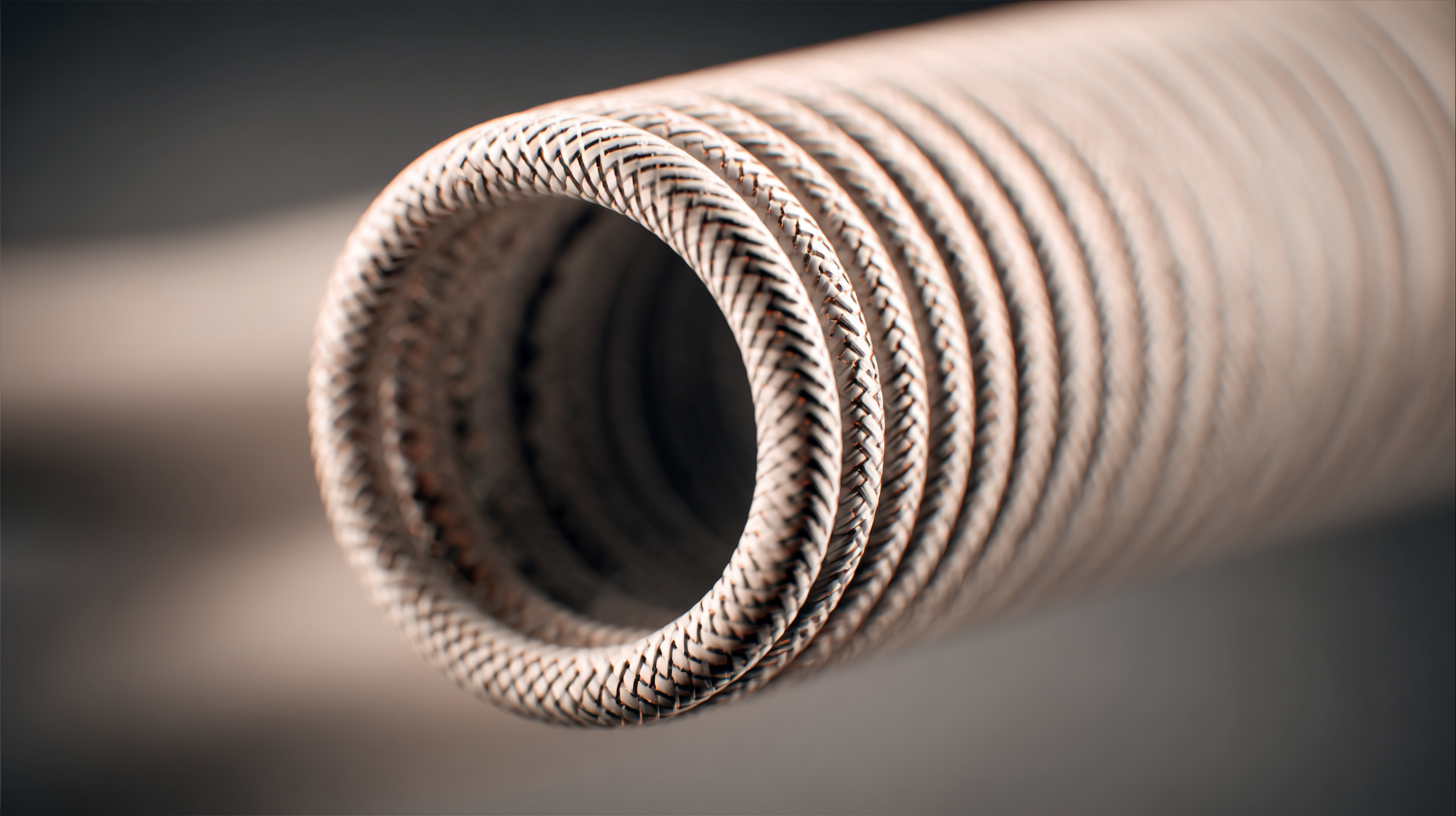The market for Flexible Silicone Hose is poised for significant growth, driven by advancements in material science and increasing demand across various industries. According to a report by Research and Markets, the global silicone market is projected to reach USD 34.5 billion by 2026, with a compound annual growth rate (CAGR) of 6.2%. Flexible silicone hoses are valued for their durability, temperature resistance, and versatility, making them vital components in automotive, aerospace, and industrial applications. As innovation in manufacturing techniques continues to evolve, the emergence of new formulations and designs promises to enhance the performance and efficiency of these hoses further. This blog aims to explore the future trends in Flexible Silicone Hose innovations, examining how these developments will impact market growth and industrial applications.

The flexible silicone hose market is witnessing exciting innovations fueled by advancements in material science. One emerging trend is the integration of advanced additives and compounds that enhance the performance and lifespan of silicone hoses. These innovations not only improve temperature resistance but also contribute to better flexibility, making them ideal for demanding applications across various industries. Manufacturers are increasingly focusing on developing eco-friendly silicone materials, which are both durable and sustainable, addressing environmental concerns while meeting consumer needs.

Tips for selecting the right flexible silicone hose include assessing the specific temperature and pressure requirements of your application. Always choose hoses that meet industry standards for safety and performance to ensure reliability. Additionally, consider the compatibility of the hose material with the fluids it will convey, as this can significantly influence the durability and effectiveness of the product.
Another notable trend is the customization of flexible silicone hoses. Companies are now offering bespoke solutions tailored to meet the unique demands of clients in diverse sectors, from automotive to food processing. Customization not only enhances performance but also allows for better integration into existing systems, promoting efficiency and reducing the risk of failures.
The Advantages of Silicone Hoses Over Conventional Materials
Silicone hoses have rapidly gained popularity in various industries due to their superior properties compared to conventional materials like rubber and plastic. One of the primary advantages of silicone hoses is their exceptional temperature resistance. They can maintain their integrity and performance across a wider temperature range, from -55°C to 300°C, making them ideal for demanding applications in automotive, aerospace, and industrial environments. This resilience reduces the risk of deterioration, ensuring longer service life and decreased maintenance costs for businesses relying on flexible hose systems.
Another significant advantage is the inherent flexibility and durability of silicone material. Unlike traditional hoses that can become brittle over time or under stress, silicone hoses offer enhanced flexibility, allowing for easier installation and routing in complex systems. Additionally, their smooth inner surface promotes better fluid flow and minimizes pressure drop. Furthermore, silicone is resistant to various chemicals and UV exposure, making it a more reliable choice for applications that involve harsh environments or exposure to corrosive substances. As industries increasingly prioritize performance and longevity, silicone hoses present a promising alternative to outdated materials, signaling a shift towards innovation in material science.

The evolution of material science is profoundly influencing the development of flexible silicone hoses, a crucial component in various industries. One of the key innovations shaping this future is the incorporation of advanced additives, which enhance the thermal stability and flexibility of silicone materials. These additives not only improve the performance of hoses in extreme temperature variations but also contribute to their durability, ensuring longer service life and reduced maintenance costs. As manufacturers continue to explore these enhancements, the reliability of silicone hoses in sectors such as automotive, aerospace, and medical applications is markedly improved.
Another significant advancement is the integration of smart technology into silicone hoses. Researchers are exploring how to embed sensors within the material that can monitor pressure, temperature, and even chemical composition in real-time. This innovation allows for predictive maintenance and immediate response to potential failures, drastically increasing efficiency and safety. As these smart features become more mainstream, the market for flexible silicone hoses is expected to expand, driven by the demand for high-performance, intelligent components that meet the rigorous standards of modern industries.
| Innovation | Key Features | Market Growth Potential (%) | Applications |
|---|---|---|---|
| Advanced Reinforcement | Increased durability and pressure resistance | 15% | Automotive, industrial |
| Temperature Resistance Enhancements | Performance in extreme temperatures | 20% | Aerospace, food processing |
| Bio-compatible Silicones | Suitable for medical applications | 25% | Healthcare, pharmaceuticals |
| Environmental Resistance | Resistant to UV, ozone, and chemicals | 18% | Agriculture, construction |
| Self-Reinforced Silicone | Enhanced resilience and flexibility | 22% | Marine, heavy-duty applications |
The silicone hose industry is poised for significant growth, driven by a combination of factors that reflect the evolving demands of various markets. One of the primary market drivers is the increasing need for lightweight and durable materials across multiple sectors, including automotive, aerospace, and consumer goods. As manufacturers seek to enhance fuel efficiency and reduce emissions, the adoption of silicone hoses, known for their flexibility and resistance to extreme temperatures, is becoming increasingly prevalent.
Another key influence on market expansion is the rising demand for high-performance materials that can withstand aggressive chemicals and harsh operating conditions. Industries requiring reliable and resilient solutions are turning to innovations in silicone hose technology to meet their stringent requirements. Additionally, advancements in material science are enabling the development of silicone hoses with enhanced features such as improved thermal stability and superior resistance to wear and tear. This relentless pursuit of quality and performance is actively shaping the market landscape and propelling the future growth of the silicone hose industry.
The production and use of silicone hoses have undergone significant transformations in recent years, particularly with a growing emphasis on sustainability. Innovative manufacturing techniques have emerged, focusing on reducing waste and emissions during the production process. For instance, manufacturers are adopting closed-loop systems that recycle silicone scraps back into production, minimizing material waste and optimizing resource use. Additionally, advancements in curing processes are enabling lower energy consumption, further enhancing environmental efficiency.
Furthermore, the demand for sustainable products among consumers is prompting manufacturers to explore bio-based silicone materials. By incorporating renewable resources into the production of silicone hoses, companies can reduce their carbon footprint and promote an eco-friendly image. Consumers are increasingly inclined to choose products that align with their values, which in turn drives market growth for sustainable silicone solutions. This evolving landscape not only benefits the environment but also positions companies at the forefront of innovation and consumer demand, ensuring their relevance in a competitive market.
